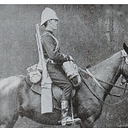How to deselect a Tory MP
According to the Conservative party constitution, all sitting members of parliament have to apply in writing to their local executive council if they wish to be selected again to fight the next election. They can do that at any time during a parliament — but the executive can also demand they do so at any point. The amount of time an MP has to respond to that demand is unclear, which could lead to delays in the process.
Once the application has been received by the executive, it must hold a meeting to take a decision within the space of two weeks to two months. The MP will be invited to make their case in person if they wish to. The executive then votes on a motion to reselect the MP in a secret ballot, after which the overall result is revealed but not the number of votes. The MP and the local party chairman will get to decide which two people count the votes.
If the member wins the vote they are re-selected to be the candidate. If they lose they have two options. Again, the amount of time they have to choose is not specified in the constitution — which could lead to a considerable hold-up if the MP refuses to play ball.
One option is to request that the entire local party vote in a postal ballot. The local party chair and the MP themselves each get to select a person to oversee the postal ballot process. The MP is allowed to send out a leaflet on a single A4 sheet making the case to members as to why they should be re-selected.
The other option would see the MP put themselves up against other candidates who want to fight for the seat. When choosing new candidates, the Conservative party draws up a list of approved hopefuls who can apply to fight for particular seats. A local constituency panel in each seat will whittle down the applicants to three, and then the association executive will eliminate one before a meeting of local members gets to decide between the final two. The sitting MP in a deselection process can ask to be added to be one of the three on the initial shortlist to fight for the place.
Back in 2009, the former Conservative Campaign for Democracy chair John Strafford wrote a blog offering tips for members who want to dump their MPs. He said it was important to rally a list of members who want a reselection and have at least three of them go public with their demands every day to give a sense of momentum behind the drive.
“The more senior the members, the better. This gives a fresh impetus, every day, to the campaign,” he explained. “It is essential that you have several people that will talk to the media. Unless you can give other names than yourself the media will lose interest.” He also suggested getting angry members to call the association officers to give the impression the entire constituency party is “up in arms”.
Ironically, Strafford used the Beaconsfield constituency as his example, where the association, which he chaired at the time, pushed Tim Smith out with deselection threats in 1997. Smith was replaced by Dominic Grieve — who would later become one of the lynchpin Tory rebels against Brexit.
So associations may be able to dump their MPs — but must always be careful what they wish for.
Source PoliticsHome Newsletters. John E Strafford: A short guide to deselecting your MP
